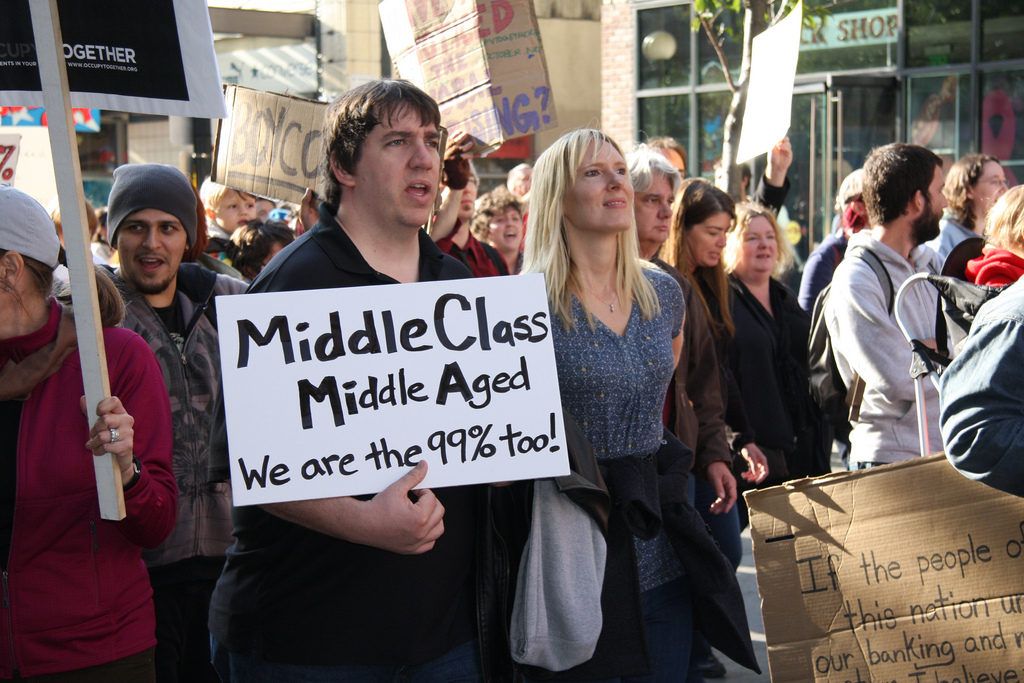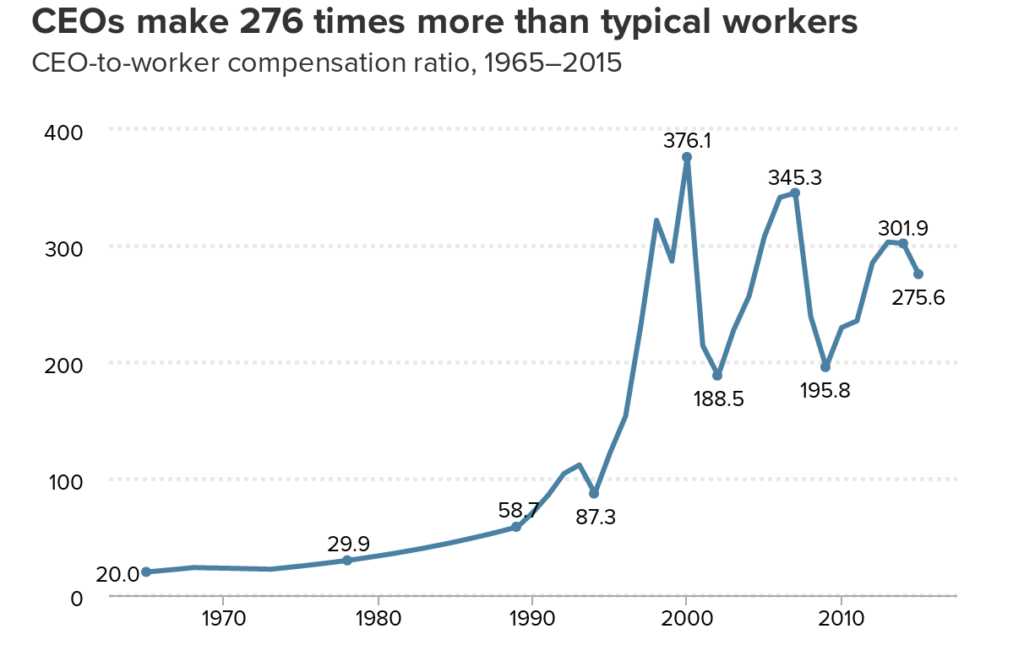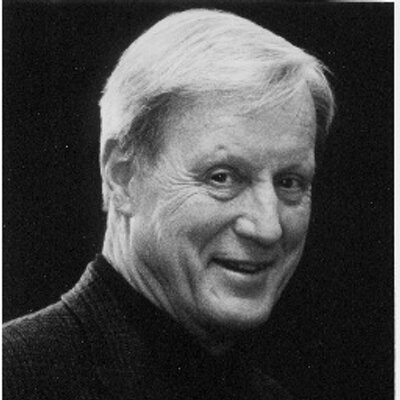
Trump and Clinton are making a pitch for the votes of an activist middle class. (Hollywata/Flickr cc 2.0)
This post originally appeared at ReclaimTheAmericanDream.org and is authored by Hedrick Smith, former Washington Bureau chief at The New York Times and author of Who Stole the American Dream?
If Donald Trump can get over his nonsense about President Obama being the “founder” of ISIS and his hassling Gold Star families and fellow Republicans, Campaign 2016 can get to America’s core issue — economic inequality and the rival pitches of Clinton and Trump of a better deal for the middle class.
This year, the captains of industry and finance have been sidelined and they know it. “Everything has been upended,” John Engler groused to a New York Times columnist. Engler is CEO of the Business Roundtable, organ of America’s 200 most powerful corporate CEOs. “We’re now faced with two candidates who, when it comes to the United States economy, have diametrically opposite viewpoints from us. It’s a cause for great concern.”
Instead, the grand prize this year is an aroused middle class — the rebellious legions mobilized by Bernie Sanders’ attacking a system selfishly rigged by the rich; angry blue-collar Americans’ betting on Trump to settle scores with CEOs whose honeymoon with globalism left Main Street in the dust; the millions of single moms struggling to juggle just-in-time, part-time jobs; or the fleet of new college grads fishing for steady work in a gig economy while burdened with $1.2 trillion in student debt.
Twilight for Trickle-Down
Surprisingly, what we may be witnessing is the twilight of an era. For nearly four decades, the business establishment has captured policy-makers in both parties with the laissez faire creed of Chicago University economist Milton Friedman, who preached the gospel of an untrammeled free market for business and its single-minded pursuit of “shareholder value.” But in an election year marked by middle-class angst, corporate trickle-down economics are not selling well, though Trump embraced Republican orthodoxy on business deregulation and tax cuts for corporations in his Detroit Economic Club speech.

In the 1960s CEO pay was 20 times average worker pay. Today, it is nearly 300 times. (Economic Policy Institute)
Small wonder. Corporate profits have rebounded strongly since the 2008 recession and the stock market is hovering near-record highs. CEO pay at major companies runs close to 300 times the salaries of average workers, according to the Economic Policy Institute. But the middle class has been left behind. The household income of a typical American family, adjusted for inflation, is lower now than in 1999, and at $7.25 an hour, the federal minimum wage is poverty pay, more than 30 percent below the inflation-adjusted level in 1968.
Heeding the electorate’s sour mood over these gaping inequalities, both Clinton and Trump cast themselves as champions of the middle class. Clinton declares that her primary mission is to create an economy that “works for everyone not just those at the top.” Trump boasts egotistically to Middle America, “I am your voice.”
The question, of course, is: How authentic are you and what can you deliver?
Target Banks, Protect Social Security
Both Trump and Clinton target Wall Street and both vocally oppose trade deals that are anathema to a newly vocal working class. Astonishingly, Republican and Democratic Party platforms both call for tougher regulation of Wall Street banks, even restoring Glass-Steagall, the New Deal law that walled off the casino of Wall Street investment banking from the commercial banks the rest of us use.
On Social Security, both Trump and Clinton defy House Speaker Paul Ryan and other small-government Republicans who want to prune and privatize the nation’s retirement system. Trump pledges to protect it. Prodded by Sanders, Clinton says she’ll expand benefits.
Different Paths on Jobs and Taxes
But on jobs, taxes and the minimum wage, their paths diverge. Trump would give huge tax cuts to the rich and to corporations. Clinton would raise taxes on the super-rich. Clinton would raise the minimum wage to $12. Trump has long said, keep it at present $7.25 level. Then in late July,he shifted to a $10 minimum but quickly added, “states should really call the shots.”

Hillary Clinton and Donald Trump. (iprimages and Michael Vadon/Flickr cc 2.0)
On jobs, Trump’s formula is to “bring jobs back from China, Mexico, Japan, Vietnam” and to induce the repatriation of $2.5 trillion in profits that American multi-nationals have stashed overseas by offering them a 10-percent tax rate on overseas profits instead of the regular 35 percent — which sounds like a formula for encouraging corporate America to ship more jobs overseas.
Trump claims he’ll give US workers a boost by renegotiating NAFTA, Bill Clinton’s trade agreement with Mexico and Canada. And if the Mexicans won’t play ball, he’ll pull out of NAFTA as well as keep the US out of President Obama’s proposed Pacific trade pact. To stop America’s job drain to China, Trump vows a crackdown on China’s currency manipulation, its subsidies to Chinese exporters, and any cheating on global trade rules. And if Beijing won’t behave, Trump threatens tariffs and other retaliation.
While Clinton, too, scorns bad trade deals, the cornerstone of her job strategy is a home-grown investment partnership. In her first 100 days, she promises to launch the largest investment of public and private capital in 60 years to modernize America’s transportation system — the biggest since President Eisenhower got Congress in 1954 to fund the interstate highway system. Cost in the trillions, her campaign says, jobs in the hundreds of thousands, gains for American competitiveness. Plus more investment, Clinton says, in the nation’s communication grid, green energy and high tech R&D.
Will Trump’s or Clinton’s Strategy Work?
Trump’s trade-war tactics get poor marks from economists and business leaders such as famed investor Warren Buffet, CEO of Berkshire Hathaway, and former New York Mayor and multibillionaire businessman Michael Bloomberg.
Speaking as a political independent at the Democratic Party convention, Bloomberg mocked Trump’s business acumen. Trump, he said, has left behind a trail of bankruptcies, lawsuits, angry shareholders, “contractors who feel cheated and disillusioned customers who feel ripped off. Trump says he wants to run the nation like he’s run his business? God help us!”
A more detailed analysis by Moody’s Analytics predicted that if Trump were to carry out his tax cuts and tariff wars, economic inequality in the US would worsen, about 3.5 million Americans would lose their jobs, home prices would fall and the stock market would plummet.“It will be a difficult four years for the typical American family,” Moody’s concluded.
Clinton’s plans for a massive infrastructure push have won more credibility among economists and business leaders. But her strategy faces formidable political obstacles. Republican leaders in Congress have consistently opposed similar appeals from President Obama for a major push to invest in America’s infrastructure.
Unless Democrats win control of Senate and House in November, the Clinton job strategy may be mired once again in partisan gridlock. So if Middle America wants a better deal from Washington, voters better pick their party and vote down ticket as well as for the top spot. Otherwise, the campaign rhetoric will be just that.




